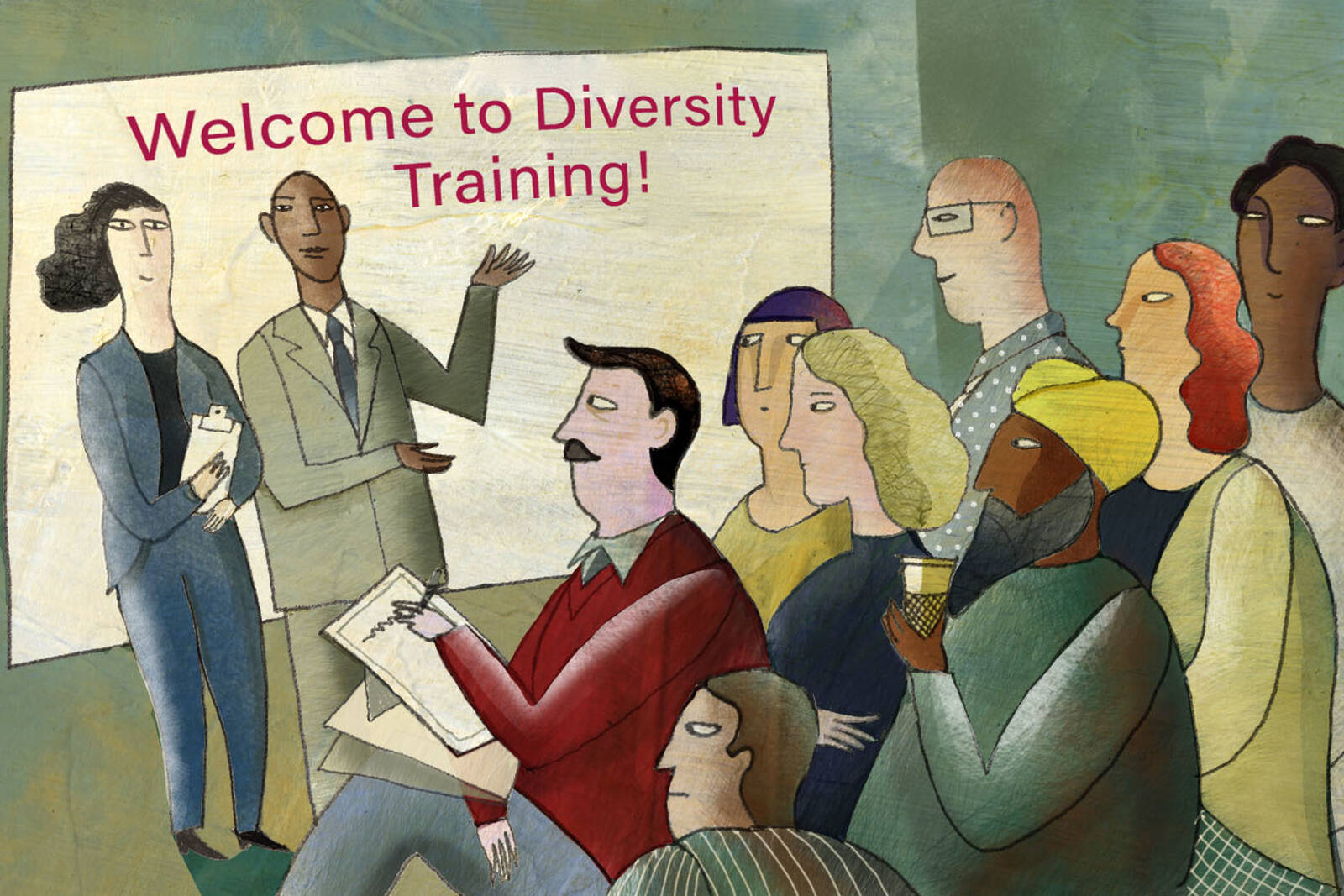Organizations Jul 1, 2021
6 Evidence-Based Strategies for Improving Diversity in Your Organization
“Trainings are only the beginning.” Here’s what to consider next.

Yevgenia Nayberg
The racial reckoning of spring 2020 prompted much soul-searching at organizations, as companies, nonprofits, and schools realized they could no longer ignore failures of diversity and inclusion. Many quickly rolled out programming aimed at addressing these shortcomings—in particular, diversity trainings.
But training alone can’t address long-standing organizational failings, argues Ivuoma N. Onyeador, an assistant professor of management and organizations at the Kellogg School. “It’s fine to have trainings,” she says, “but trainings are only the beginning of the efforts needed to improve diversity in an organization.”
On their own, trainings can’t address systemic problems: pay inequity, leadership that is mostly white and male, failure to hire underrepresented groups. Additionally, some trainings just don’t work or even backfire. For example, research has shown that implicit bias training—a popular approach that seeks to help participants recognize and overcome unconscious prejudices—does not reliably reduce bias in the long term and may reduce participants’ sense of responsibility over their own behavior. Yet some organizations have implemented implicit-bias training and figured that’s enough.
In a new policy paper, Onyeador, along with coauthors Sa-kiera T. J. Hudson of Yale University and Neil A. Lewis Jr. of Cornell University, explores how organizations can move beyond implicit-bias training. The researchers reviewed the existing literature on diversity efforts in organizations and developed a set of evidence-based recommendations for creating a robust, multifaceted approach to achieving diversity goals.
Here, Onyeador highlights six key takeaways.
Prepare for bad reactions.
Diversity efforts may be poorly received. The backlash can range from eye-rolling in a training session to a sense of grievance that underrepresented groups get “special treatment” to outright hostility.
Organizations should be realistic about these challenges and have plans to address them.
“We do this in other arenas—we would never launch a product without anticipating potential snags in the process,” Onyeador explains.
Organizations can build support for diversity programs by proactively addressing employee concerns. Majority group workers may fear they’ll be passed over for promotions in the name of diversity or punished for “saying the wrong thing,” or they may simply believe that diversity isn’t important—worries that can be allayed before a new program is introduced by addressing them in ways that fit your specific organizations’ culture and context.
Facilitate intergroup contact—but also create dedicated spaces for underrepresented groups.
When majority group members interact with underrepresented groups, their attitudes change. One recent study found that interracial interactions help white people perceive and combat inequality; another showed that, after hearing people of color discuss their cultural backgrounds, white people displayed more inclusive behavior toward nonwhite coworkers. By creating lots of opportunities for coworkers of all backgrounds to gather and talk openly, organizations can bring about a more inclusive culture.
But it’s essential to recognize that intergroup contact may also place a burden on underrepresented group members, who may feel exhausted, singled out, or responsible for teaching others. That’s why it’s just as important for organizations to create dedicated structures such as affinity groups that allow underrepresented groups to gather. In addition to providing camaraderie, these spaces can facilitate career networking and advancement.
“People of color, for instance, are having a very different experience in these organizations than white people, and it can be nice to have a space where you meet other people and solve problems, share resources, and find role models,” Onyeador says.
Messaging matters, but action matters more.
It’s easy to sing the praises of, say, your company’s family-friendly policies in a job description. But it’s much harder to actually be accommodating when an employee needs several days off to care for a sick child.
In fact, research shows that organizations that include organizational-diversity messages in job descriptions aren’t necessarily better at recruiting a diverse pool of employees or less likely discriminate against them.
“We want to make sure that both of those pieces are in there,” Onyeador explains. Including inclusive language “is important to do, because it signals to your potential pool of applicants that the organization could potentially be a supportive place for them. But then it’s really important to follow that up with action.”
Treat diversity as you would any other organizational goal.
Action means creating accountability structures—which, according to one 2006 study, is the single most effective way to improve managerial diversity.
Assigning institutional responsibility “can look a number of different ways, like having a chief diversity officer with some sort of oversight role, or diversity officers within units reporting up to a leader who has the power to hold units and managers accountable,” Onyeador says.
“I suspect that if bonuses were tied to diversity metrics, we would see things shift.”
— Ivouma Onyeador
Organizations can also create incentives for participating in inclusion efforts, like bonuses or perks for serving on a diversity council.
“People are very motivated by extra money at the end of the year,” she points out. “I suspect that if bonuses were tied to diversity metrics, we would see things shift. We would find the Black engineers. They’re there.”
You can’t improve what you don’t measure.
Often, organizations are reluctant to collect and analyze data on diversity programming.
But that mentality wouldn’t fly with any other important organizational objective, so it shouldn’t be acceptable for diversity efforts. If a particular program or training didn’t work, “it’s imperative that we know that,” she says, so it can be improved.
There’s a similar hesitance about studying outcomes for the overarching goals of organizational change. All too frequently, companies will set out to improve diversity—but fail to measure the variables of interest.
Onyeador summarizes the attitude this way: “Did we increase the number of women in the C-suite? It’s not clear. Is the climate different? We have no idea. Are we retaining more people? Nobody knows.” Organizations have the data to answer such questions. Deciding to pay attention to it “will go a long way.”
None of this is easy. That’s OK.
Diverse organizations are not built overnight or by accident. But just because the work is challenging doesn’t mean it’s impossible.
In fact, “as organizations, as companies, as universities, we’re used to doing hard things by putting our heads down, figuring it out, being really careful, and thinking through everything,” Onyeador says.
There’s no reason, she says, that the same level of effort can’t be applied to diversity.
Susie Allen is a freelance writer in Chicago.
Onyeador, Ivouma N., Sa-kiera T. J. Hudson, and Neil A. Lewis, Jr. 2021. “Moving Beyond Implicit Bias Training: Policy Insights for Increasing Organizational Diversity.” Policy Insights for the Brain and Behavioral Sciences.



